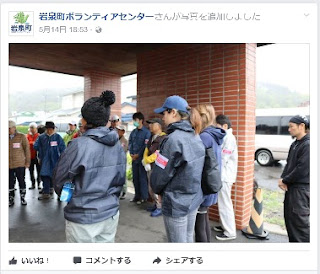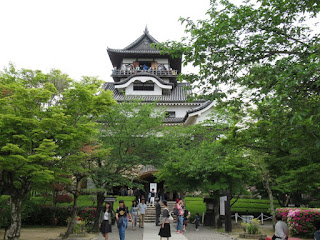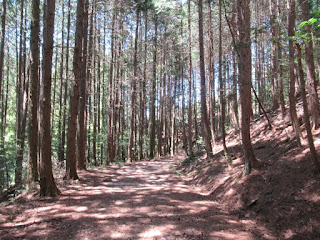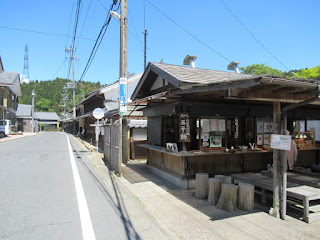Iwaizumi
Town is located about two hours’ drive east of Morioka City, the capital of
Iwate Prefecture, northern Japan. The town was seriously hit by the typhoon
disasters last summer.
I
visited there to join some volunteer activities.
They also had landslides of the mountains.
Nine
months have passed since then. I found the damages remained in many places.
The
houses at the riversides were destroyed; they are left as they were. The
electric poll fell on the house. (See also the top photo)
Soil,
sands and rocks flew into the houses. It is necessary to wipe out the soil and to take out the pieces of broken furniture before restoring or
disposing the buildings. They expect volunteer workers to help such jobs.
I,
as well as other members of my group, visited the Iwaizumi Volunteer Center in the morning of May 14 and got explanations of the works of the day.
There also were other volunteers including a group of foreigners.
We
moved to a house in the mountainous region, which was washed heavily by a landslide. (See the 2nd photos from the top)
I found the floors were covered with rock and sands. Broken cabinets and tables, food boxes and other materials scattered in the rooms.
We
worked about five hours to take materials out of the house, to segregate the
wastes into several categories such as metals, glasses and burnable wastes, and
to put some of the wastes into garbage packs.
The
family members of the house were there and checked if there were some materials
to be kept.
It
is reported that total 15000 volunteer workers have been engaged in the
activities in Iwaizumi after the typhoon disasters. The works have been
completed at more than 700 houses.
Excavators and other construction machines are everywhere in the town.
Excavators and other construction machines are everywhere in the town.
They took the photos when the day's activities (explaining the activities to the participants) started in the morning. The photos were uploaded on their pages in the afternoon. A quick job!!
The left photo is from the center's Facebook page.
Iwaizumi's nature is beautiful. We experiences walking in the mountains and picking up mountain herbs.
The town is trying to activate the communities with tourism and other businesses like other towns and villages do in Japan.
On the way from Morioka to Iwaizumi, we found the colonies of skunk cabbage. It was beautiful.
Not a few schools in the region were closed.in the last decades Some of them have converted into commercial facilities.
See also
Save Iwate @ Morioka, Sanriku Coast (May, 2014)
3 years after the quake @ Iwate (May, 2014)
Four and half years after the quake (Oct.- Nov. 2015)
Autumn scenes @ Iwate (Oct.-Nov., 2015)
The left photo is from the center's Facebook page.
The town is trying to activate the communities with tourism and other businesses like other towns and villages do in Japan.
On the way from Morioka to Iwaizumi, we found the colonies of skunk cabbage. It was beautiful.
Not a few schools in the region were closed.in the last decades Some of them have converted into commercial facilities.
See also
Save Iwate @ Morioka, Sanriku Coast (May, 2014)
3 years after the quake @ Iwate (May, 2014)
Four and half years after the quake (Oct.- Nov. 2015)
Autumn scenes @ Iwate (Oct.-Nov., 2015)
Japanese walnuts products from Iwate (Jan., 2017)




























































